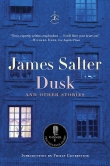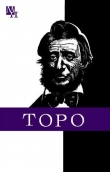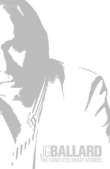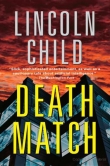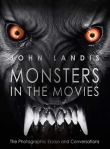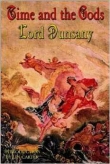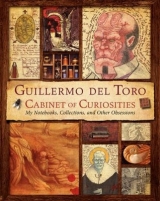
Текст книги "Cabinet of Curiosities: My Notebooks, Collections, and Other Obsessions"
Автор книги: Guillermo del Toro
Соавторы: Marc Scott Zicree
Жанры:
Публицистика
,сообщить о нарушении
Текущая страница: 3 (всего у книги 17 страниц)
COLLECTIONS

Notebook 4, Pages 43A and 43B.
BLEAK HOUSE
“Anything to vary this detestable monotony.” —CHARLES DICKENS, BLEAK HOUSE
“They’re my friends. I made them.” —J.F. SEBASTIAN, BLADE RUNNER

The Comic Book Library at Bleak House.
“TO ME,” GUILLERMO CONFESSES, “the beautiful thing about Bleak House is that when I come in and go out of the house, it is cleansing for me. Catholics go to church, Jews go to temple. I come here.”
He adds, “Spiritually, my life is here. I exist in this house, really.”
Bleak House is Guillermo’s second home and working office, his artistic masterpiece, his cluttered attic, his pride and joy. It’s where he goes to draw and write, to recharge his batteries, to explore unfettered his creative whims. When in Los Angeles and residing at his family’s home nearby, he visits Bleak House at least two hours every morning and one hour at night, seven days a week. He delights in giving tours to luminaries from around the globe, including other noted directors.
The moment you step inside, you are dazzled by the extent of the visual delights. Bleak House bursts with “over 550 pieces of original art,” Guillermo notes. In fact, Bleak House has recently grown, so extensive is the collection. What began as one house has now expanded to include a neighboring structure, which is still finding its own distinct identity. Like the first, it features Guillermo’s prize possessions. For instance, the second wing’s living room is filled with magnificent preproduction maquettes of creatures from Pacific Rim (2013), which are flanked by a stunning bronze by Stanislav Szukalski and a full-size replica of Robert Picardo’s Meg Mucklebones from Ridley Scott’s Legend.
“When I was a kid,” Guillermo says, “I read Vathek by William Beckford. In it, Fonthill Abbey was mentioned. That was his personal treasure: an entire building—or series of Gothic buildings—created to lodge his collection of strange artifacts, oddities, and scientific anomalies. He inherited an obscenely large fortune, so he was able to secure every treasure he could dream of. And dream he did. Within my means, I have also indulged in collecting. But I do it because it is the world as I understand it; as it exists in my soul.”
Guillermo is quick to point out that neither Bleak House is intended to be a museum or storehouse. Both homes are working spaces, with each room serving a different purpose. “For example, I have a room where I assemble models,” he says. “The reason is as banal as the fact that it is well-lit and is set up so I can put the actual place where I assemble the models close to a window. Because I need to ventilate when I prime. Otherwise I get really high.”
However, creative inspiration, not base practicality, is what Bleak House is made for. In the main house, Guillermo says, “The Rain Room is literally my favorite place. I spend 90 percent of my time at Bleak House there, writing. But my second favorite room is the Sun Room, the Manga Room, the cabin in the back. I love to draw there, more than in the real drawing room, which is upstairs, because the Manga Room has really good energy. It’s so peaceful.”
Sometimes, though, where Guillermo works is more a question of what feels right on any given day. “If I want to write a scary story, I don’t necessarily go into a scary room,” he explains. “If I want to write a light-hearted story, I don’t go into a light-hearted room. It’s just whatever feels comfortable on the day. I do most of my writing on sofas. I sit exactly like my mother—one leg under my other leg, leaning. I have every form of desk known to man—I collect them as objects—but I never write on a desk. Except for the desk in the Rain Room. I can put my elbow on an adjacent desk, so it’s comfortable.”
It’s hard not to wonder: Will Bleak House continue expanding until it consists of, not one or two structures, but an entire block? Guillermo says no. “Most of the time, it’s just my personal office,” he elaborates. “I don’t want to expand because I think it would be unfair to the house and the neighbors. It needs to remain a home.”
And what a home! A journey into Guillermo’s imaginative world would hardly be complete without a tour of one of the most remarkable residences in the world. Beckoning warmly, Guillermo bids us to accompany him into the hallways, rooms, and recesses of Bleak House….
THE FOYER
Entering the Foyer of Bleak House, the first thing that confronts you is an enormous head of Boris Karloff as Frankenstein’s monster, fashioned by former Tussauds sculptor Mike Hill. Hill had considerable difficulty making the head that massive. It took numerous attempts to get the proportions right. But since this is one of Guillermo’s favorite monsters—along with the Gill-Man from Creature from the Black Lagoon and Lon Chaney’s Phantom of the Opera—it was no surprise that Guillermo snapped up the sculpture when it was exhibited at Monsterpalooza in 2011 and installed it in his home.
On one wall above the entryway are prints of Manhattan in troll language from Hellboy II: The Golden Army (“because,” he says, “the conceit was that the Troll Market was underneath the Brooklyn Bridge”). Taking center stage is a full-size figure of the demon Sammael from Hellboy, made for Guillermo by Spectral Motion.
Throughout Bleak House, other original props, concept art, storyboards, and preproduction maquettes from Guillermo’s films have been carefully selected and artfully scattered, but they do not dominate the collection. Were Guillermo to house everything designed and built for his films, he’d need a series of warehouses rivaling Charles Foster Kane’s. Instead, only those mementos from Guillermo’s films that hold a special fondness or significance for him are included among the wealth of glittering objects.

The Foyer at Bleak House.

A life-size sculpture of H.P. Lovecraft by Thomas Kuebler watches over the Horror Library at Bleak House.
Certain artists make regular appearances throughout the house. A perennial favorite is Basil Gogos, the famed cover artist for the magazine Famous Monsters of Filmland. His portrait of Guillermo is featured prominently in Bleak House’s entryway.
Dominating another wall is a large painting of Saint George killing the dragon that looks old but is actually a recent painting by Russian artist Viktor Safonkin. It holds special significance for Guillermo: “It’s one of my favorite images: (a) it speaks of impossible tasks, (b) it’s a great image because of the way the dragon is rendered.”
Guillermo adds, “I love dragons. They are my favorite fantasy creatures and are the most beautiful animals in all of mythology.” He cites a theory he likes, articulated by David E. Jones in An Instinct for Dragons, that proposes the dragon “is an imaginary amalgam we, as a species of primates, made from the predators we feared the most—the reptiles, the birds of prey, and the big cats.”

The Horror Library is also home to one of the original Cronos device props, clasped by a silicone hand used for some of the film’s special effects.
THE HORROR LIBRARY
To the right of the Foyer is one of Bleak House’s many libraries, where a full-size—and utterly convincing—figure of H. P. Lovecraft stands perusing a volume. Lovecraft is one of Guillermo’s most cherished icons, a spiritual godfather, and Lovecraft’s At the Mountains of Madness is Guillermo’s most-longed-for, unmade film project.
The Lovecraft statue was sculpted by Thomas Kuebler. “I had it commissioned,” Guillermo says. “I approved every stage of the sculpt. People think his likeness is very easy; it’s actually very difficult. He has a few quirks, the fold by the mouth, the lantern jaw. They can be cartoonish.”
The Lovecraft figure stands watch over Guillermo’s beloved books on horror, including the first book he ever bought—an anthology edited by Forrest J Ackerman, which Guillermo purchased in 1971 when he was seven. The Horror Library is filled with classic stories by such outré and macabre authors as Arthur Machen, M. R. James, and Sheridan Le Fanu. “Everything that is in Spanish means that I bought it when I was very young,” Guillermo explains. Ravenous for knowledge, Guillermo began teaching himself English as soon as he could, so he could read more broadly: “I was very young. I was less than ten, and I was bilingual. I started with a dictionary and all the movies from America, which were subtitled, not dubbed.”
In the Horror Library, Prince Nuada’s sword from Hellboy II rests quietly a few feet away from the baby bug prop from Mimic. “And that’s one of the real Golden Army soldiers, life-size,” Guillermo says. “Next to it is the chopped-up head from Blade II.” Another familiar figure from Guillermo’s oeuvre stands out. “That’s the first concept maquette ever done of Hellboy,” Guillermo notes. “That was done by Matt Rose. And this is the Cronos device on one of the silicone hands we used in the movie.”
Guillermo avidly collects items from cherished movies and TV shows, including the Devil figure featured in Tim Burton’s The Nightmare Before Christmas. “That’s my favorite character in the whole movie,” Guillermo says. Scattered throughout the room are also visual touchstones from 20,000 Leagues Under the Sea, The Phantom of the Opera, Lost in Space, and Night Gallery. The replica figure of Baron Boris von Frankenstein, based on Boris Karloff, from the stop-motion-animated Mad Monster Party was made for him by the animation crew on Blade II.
This library also holds a miniature scene from Disneyland’s Pirates of the Caribbean ride. Disney, in particular, has been a towering influence on Guillermo. But to really appreciate that, we need to stroll down the hallway and find a certain bookcase, which slides to reveal a secret room….
THE DOWNSTAIRS HALLWAY
The downstairs hallway of Bleak House is lined with a cornucopia of wonders, gathering together framed insects, cameos, nineteenth-century anatomical drawings, a fake mummified rabbit, weird objets d’art, and stunning artwork. These pieces include concept art for Sleeping Beauty by famed children’s illustrator Kay Nielsen, original work by science fiction and horror illustrator Michael Whelan, and illustrations by Charles Doyle, the father of Arthur Conan Doyle.
“These are my magic books,” Guillermo says, pointing to tomes on the art of illusion, prestidigitation, and misdirection from across several centuries. Then he gestures toward a row of busts depicting famed magicians: “And these are Thurston, Houdini, Chung Ling Soo.”
Favorite works of literature also line the shelves—volumes by Charles Dickens, Victor Hugo, Jorge Luis Borges, and Edgar Allan Poe, among others.
Guillermo indicates a large framed insect. “That’s the bug I bought as a kid when I first visited New York. I always wanted to use it in a movie, and it ended up in Pan’s Labyrinth.”
Nearby are other touchstones of Guillermo’s life. “This is my grandmother’s cameo, which I’ve used as a prop in a couple of movies, and which I want to use again in Crimson Peak. And this is the first model kit I painted as a kid, Pirates of the Caribbean.”

Wall sculpture by T. Gore.
THE HAUNTED MANSION ROOM
“I first went to Disneyland when I was three years old,” Guillermo recalls. “It was life-changing for me. My mind became what it is. I’m a big Disney fan. I believe the man changed the way we tell stories. He was doing transmedia before anybody talked about transmedia.”
The Haunted Mansion Room—also called the Fairy Tales and Folk Tales Library—replicates many elements from Disney’s unique attraction, including the wallpaper from the mansion’s foyer by Bradbury and Bradbury, gargoyle sconces, and Marc Davis’s original acrylic painting of Medusa. Also notable is the life-size figure of the Hatbox Ghost, a ghost no longer seen on the ride. “It was on the Haunted Mansion for only a few days, then they took it down,” Guillermo relates. “The legend was that it was too scary. The reality is, it wasn’t working.”

An example of one of the many displays at Bleak House, this one in the Haunted Mansion Room and home to the original sculpt of Santi from The Devil’s Backbone.
Recently, Guillermo committed to make a new film version of the Haunted Mansion: “With Disney, when I took Haunted Mansion, one of my conditions was that they would let me tour the mansion by foot and that they would open the vault, so we could see all the preproduction art by Marc Davis and Rolly Crump and all the Imagineers. So we did. I spent the morning there like a kid. Amazing stuff.”
Guillermo had Spectral Motion construct “The Ghost Theater,” which resides here. It’s a miniature tableau of a ghost whose head vanishes from his shoulders and reappears in a hatbox, while thunder rumbles and music from the Haunted Mansion ride plays. Guillermo has long been a fan of dioramas. As a child, he built a sprawling scene in his walk-in closet from Planet of the Apes, with sixty-five figures, AstroTurf, and an illuminated moon.
“That was, in many ways, my first Bleak House,” recalls Guillermo. “I art directed that room within an inch of its life. Back then I had drawers full of Plasticine props and ‘makeup effects’ for the action figures: prosthetic wounds or gouged eyes; set dressings; monsters; horses; and a slew of Russ Berrie jigglers (my favorite toys growing up). I mended, patched, and repaired everything as needed. I still do! I keep my ‘hospital’ at Bleak House busy, repainting, gluing, or patching anything that breaks in the house. I am pretty good at restoring toys, statuettes, and books in equal measure.” The dark corners of this room are havens for all sorts of eerie things, but some Guillermo found in unlikely places. For instance, he stumbled upon a macabre illustration of death on a horse, subtitled Sooner or Later, in a Hallmark store.

A sketch of a basket star by del Toro, after a photograph in National Geographic. Del Toro often turns to National Geographic for inspiration and never takes photos, preferring to record memorable images by sketching them.

A painting at Bleak House depicting a skull full of compartments that contain assorted objects.
Presiding over the Haunted Mansion Room is a mask of Algernon Blackwood, one of Guillermo’s favorite horror writers. Nearby, the collected Oz books by L. Frank Baum and Arabian Nights mingle with a sign from the Troll Market used in Hellboy II, along with miscellaneous limbs from Guillermo’s films. “This is the hand made for the Prince in Hellboy II, for a close-up with the mechanical egg,” he says. “That’s the leg from Cronos, where he pulls the glass out of the foot.”
Look closely and you can find more personal, less ghoulish talismans, such as Guillermo’s first studio drive-on pass. “This is from my first meeting at a studio for a job—Universal. That would be 1992, ’93.”
Though most items from Guillermo’s films are judiciously placed and “not prominent,” he says, there is one artifact that is given pride of place in the Haunted Mansion Room: the original design for Santi from The Devil’s Backbone. Says Guillermo: “It was important to me for him to be here.”
THE RAIN ROOM
The Rain Room is the house’s heart, for it holds Guillermo’s heart. It is where he comes most often to write, on the big comfy sofa or at the corner desk. Beside the desk is a list of “things I have pending, things that I need to write,” Guillermo says. “I fill it up, and then I sit down and start hammering them out. It’s really ideal working this way. I usually write in the dark. It helps a lot.”
As he enters the tenebrous space, Guillermo flicks a switch. Thunder rumbles and rain from a projector cascades outside a perennially night-lit window. The illusion is perfect and sets the stage for what lies within.
“This is also my library of occult references,” Guillermo explains. Included are volumes of the landmark set Man, Myth, and Magic. “When I was a kid, it was very important.”
As inspiring as the books are, it’s difficult to tear one’s attention away from the lifelike sculptures that inhabit the room. Most dramatic of all is the astonishing re-creation of one of the greatest on-set photos ever: of Boris Karloff, bare to the waist in a makeup chair, his head fully detailed as Frankenstein’s monster, daintily sipping a cup of tea. In the Rain Room, this surreal moment has come to life: a life-size silicone statue of Karloff takes his tea break, the black lipstick from his makeup staining the cup as he drinks. “I love the detail of the cup and the lips,” notes Guillermo.

The golden grenade housing the bean that gives rise to the elemental in Hellboy II.

The Rain Room features a sculpture of Boris Karloff being made up by Jack Pierce [left] and a window that generates the effect of perpetual rain at the flick of a switch [right].
Attending Karloff is a sculpture of the genius makeup artist Jack Pierce, designer of Frankenstein’s monster, his Bride, the Wolf Man, the Mummy, and the silver-eyed, blue-skinned replicants from Creation of the Humanoids.
A replica of the doll from Night Gallery, sculpted by Thomas Kuebler, also graces this chamber. “The scariest moment of my life is that doll,” recalls Guillermo. “When she appeared on the screen, I literally—physically, biologically—peed my pants. I started screaming and lost control of my bladder.” Joining it are a cane and helmet from Bram Stoker’s Dracula, a cover painting from Famous Monsters of Filmland, and stunning illustrations from Bernie Wrightson’s Frankenstein. All are originals.
A custom-made box holds stereoscopic photographs of the maquettes from the as-yet-unmade At the Mountains of Madness, a memento of eight months of intense artistic development and preproduction planning. The original sculptures are too large for the Rain Room. “I’d need a whole Lovecraft room—which I’ll build if we make the movie,” says Guillermo.
The Rain Room also displays the original Good Samaritan gun from Hellboy and Big Baby from Hellboy II, along with Kroenen’s mask and Professor Broom’s rosary.
Not every memento and artwork on the walls recalls the occult. “That’s by a painter from my hometown,” Guillermo explains, indicating a serene painting. “That’s exactly how the light falls in the afternoon in the area where I had my office. So it brings great memories from home.”
And why a room with a storm that goes on forever? “It makes me happy,” Guillermo says. “That’s all I know. I just love the sound.”
CASA DEL TORO
JOHN LANDIS
FORREST J. ACKERMAN, the creator and editor of Famous Monsters of Filmland magazine, lived in a big house in the Hollywood Hills known as the “Ackermansion.” There he worked surrounded by his huge collection of books, cinema posters, stills, and movie props. Visiting Forry’s house was a pilgrimage made by thousands of fans over the years, including a certain young Mexican whose visit clearly made a deep impression.
My friend Guillermo del Toro’s passion and enthusiasm for fantasy, horror, and science fiction burns as brightly now as it did when he was a child in Guadalajara. And like the five-year-old Guillermo, who read Famous Monsters of Filmland and made models of monsters to decorate his room, the adult Guillermo continues to create and collect images of the fantastic.
Guillermo now lives with his beautiful wife and daughters in a very nice home in a lovely neighborhood in Southern California. Just a couple of blocks away is another respectable suburban house in which his very large and constantly expanding collection of strange and wonderful objects—books, paintings, drawings, toys, movie props, sculptures, intricate clockwork dolls, and wax figures—dwells. A plaque on the front door reads “Bleak House.”

Del Toro’s early drawing of Hellboy’s crib from Notebook 3, Page 10B.
From the exterior of Bleak House, the only hint of what is inside would be the full-scale working replica of the satanic automobile from the insane 1977 Universal picture The Car, which is parked in the driveway. And there is that life-size bronze of the great Ray Harryhausen standing by the swimming pool in the backyard.
Guillermo’s own notebooks, which he has meticulously kept for many years, reveal the complex del Toro thought process and aesthetic. Drawings, diagrams, and ideas recorded in da Vinci-like detail. And like his notebooks, his collection is in constant evolution. There are works by famous painters, production designers, illustrators, prop makers, and makeup artists; one-of-a-kind statues of every size; mass-market action figures; and garage kits. Every classic monster is represented, plus denizens from Guillermo’s own films and many creatures that only exist within the walls of Bleak House.
There is an entire room to honor the Haunted Mansion attraction at Disneyland. It is filled with Haunted Mansion memorabilia and, like the original, is rigged so that it is always a dark and stormy night outside its windows. A dark and stormy night complete with lightning, thunder, and rain!
Guillermo was an early patron of the extraordinary sculptor Mike Hill, who created the amazingly lifelike, full-scale tableau of Boris Karloff sipping tea while being transformed into the Frankenstein monster by makeup maestro Jack Pierce. Hill’s work is disturbingly realistic, as is the work of Thomas Kuebler, whose sculpture of the midget Hans from Todd Browning’s Freaks lurks at the end of a long hallway. Kuebler posed this exact duplicate of actor Harry Earles so that he is holding an open straight razor. Trust me, this is not something you want to stumble on unawares.
Guillermo’s fascination with the work and career of men like H. P. Lovecraft, Walt Disney, and Ray Harryhausen is profound, and his collection is a riot of both high and low culture. He has taken the inspiration of Forry’s Ackermansion and created Bleak House, his own private kingdom filled with items both sacred and profane. That Mexican kid has grown up into an author, artist, and world-class filmmaker. Forry would be proud.

The Art Room is watched over by Thomas Kuebler’s sculpture of Johnny Eck from Freaks.
THE ART ROOM
As everywhere, the Art Room contains items both expected and unexpected. True to its name, this is where Guillermo keeps books on art and photography; one cabinet also holds biographies. Guillermo ticks off the accretions gathered from auction catalogues and galleries around the world, then he points to a sculpture and explains, “This is a Victorian casting of an old lady’s skull made in bronze. These are masonic lenses, to read their secret documents.”

Big Baby has its own chair in the Rain Room.
A few items from Guillermo’s own work are sprinkled into the room’s arrangement. “This is the Abe Sapien box in Hellboy,” he notes, “and that’s a mask for Hellboy II that was never used in the movie.” Nearby rest the seed that hatches the elemental in Hellboy II and a maquette of an albino penguin for the as-yet-unmade At the Mountains of Madness.
Throughout the house, these juxtapositions and arrangements provide tangible evidence of the dance in Guillermo’s life between his inspirations and formative experiences and what he himself creates. These influences span from childhood to the present day. “This is the original art by Richard Corben for a poster I had on my wall as a kid,” Guillermo points out. “I really loved it, and I hoped to one day own the original art.”
The guardian of the Art Room is Thomas Kuebler’s hyper-realistic sculpture of Johnny Eck from Tod Browning’s Freaks. Though in its totality the house seems filled with spirits and presence, Guillermo says this was literally true for one particular object: “This cabinet came with a ghost. It was here for a while. So my mother cleansed the house, and now it’s gone.”
THE STEAMPUNK ROOM
Adjacent to the Art Room is what Guillermo calls the Steampunk Room. Here, he gestures to another familiar figure from Freaks: “That’s Koo Koo the Bird Girl.” Nearby is Hans, the homicidal dwarf, from the same movie, both sculpted by Thomas Kuebler.
The Steampunk Room contains a supernatural bestiary: Along with a figure of Lovecraft’s Cthulhu and a morlock from George Pal’s The Time Machine is a superb figure of Oliver Reed as the Werewolf, from the Hammer Films production. “My favorite werewolf in history,” Guillermo notes. “Roy Ashton’s design is almost like a cubist painter’s. It has that square head. There’s something ridiculously beautiful about it. And savage—Oliver Reed is an animal.”
Here, too, are Hellboy’s original coat and Rasputin’s robe from Hellboy, plus art by Mike Mignola for Pan’s Labyrinth. Prints by the brilliant French artist Moebius grace the wall and more art books line the shelves. “At the bottom,” notes Guillermo, “are all the symbolists,” and perhaps most important of all, “the encyclopedia of art I read as a kid.”
Two more of Guillermo’s heroes have strong presences here—James Whale and Ray Harryhausen. “This is an original drawing by James Whale,” Guillermo comments. “And that’s a brush from his paint kit.”
A sweep of his hand takes in model kits, a skull clock from the 1700s, Japanese netsukes, representations of the Gill-Man from Creature from the Black Lagoon, and finally an odd little container—a vial of blood from Steve Brudniak, an artist who sells his own blood as art. “We all do,” Guillermo notes.

The Steampunk Room, presided over by a sculpture of Oliver Reed’s Werewolf from Hammer Films’ The Curse of the Werewolf.

The logo for Mirada, del Toro’s production company.

Sculptures of skulls and human expressions, meant to aid artists working in Bleak House’s Studio.
THE STUDIO
Guillermo renovated Bleak House’s garage to serve as his art studio, where a quote from Albert Einstein sets the tone: “Imagination is more important than knowledge.”
The Studio is the most utilitarian of all the rooms in Bleak House. It’s where Guillermo invites concept artists to work together on his projects. “Normally it’s empty,” Guillermo notes. “But when I bring people in for preproduction, it can accommodate up to eight artists without any problem.”
On display in this room are some of Guillermo’s many awards—“The Hugos, the Nebula, Mexican Oscars,…”—along with mementos from fellow filmmakers. Of one, he remarks, “This is a letter from Miyazaki, thanking me for a book I sent him.”
However, most of the inspirational items in the Studio are meant to be directly related to the work at hand: storyboards and concept art from Guillermo’s films, which line the walls in greater quantity here than in the rest of the house. There is art from Cronos, Devil’s Backbone, Mimic, Hellboy, Hellboy II, and more. An illustration from Pan’s Labyrinth bears the inscription “In our choices lies our fate.” Maquettes and props are scattered about, along with terrific presentation boards from the unmade At the Mountains of Madness. Indicating a figure, Guillermo comments, “That’s one of the guards from Hellboy II with a crushable head, so you can see the dented portions. Mr. Wink grabs it and crushes it. So we had a wire inside. You pull that, and the head crushes in.”
The framed insignia from Guillermo’s company, Mirada, is prominently featured: “We wanted to make it sort of a baroque little piece that has death, rebirth, imagination represented by imaginary animals, octopuses—which we all like—and dragons. The owl is the gaze and the wisdom to look at things a different way. The company name, Mirada, means ‘the gaze.’”
THE STAIRCASE
At the far end of the Foyer, a winding staircase leads to the second floor. Upstairs are the Screening Room and the Comic Book Library. As we reach the landing, Guillermo points to an image and says, “This is the first concept drawing of Hellboy we ever did.” Next to it are illustrations by classic fantasy illustrator Hannes Bok, an original cel from the landmark 1914 Winsor McCay cartoon Gertie the Dinosaur, and a Ron Cobb design for Aliens, which was given to Guillermo by James Cameron. Continuing the Alien theme is artwork by H. R. Giger.
As in other areas, standing guard is a Thomas Kuebler sculpture from Freaks. This one is a life-size figure of Schlitzie. “This is my favorite, probably, because it usually puts me in a very good mood,” notes Guillermo. “I need to be very grumpy for it not to work.”
Two other notable items are originals of the posters Drew Struzan did for Hellboy and Pan’s Labyrinth, which were released only as limited editions. “The studios didn’t want to use them,” explains Guillermo. “I think Drew is a genius. Such a shame the marketing departments have their own ideas.”

The staircase leading up to the second floor of Bleak House.
THE SCREENING ROOM
Indeed, the primary function of the Screening Room is to watch films, but it is also a shrine to Guillermo’s favorite filmmakers—a place where he can come to study and be inspired by their work. In particular, Hitchcock and Disney, Guillermo’s eternal favorites, vie for wall space: “Everything on the wall is original art from Fantasia, Sleeping Beauty, Alice in Wonderland, The Adventures of Ichabod and Mr. Toad….”
The books in this room are predominantly biographies and retrospectives of four directors Guillermo holds in the highest esteem—Stanley Kubrick, David Lean, Alfred Hitchcock, and Luis Buñuel. “I also have some texts on Kurosawa,” he elaborates. “What I try to do is, before I watch a movie, I read a little bit about it.”
Guillermo owns film prints of only two movies—Cronos and Brian De Palma’s Phantom of the Paradise—which are housed in their film cans beside a vintage Chinese desk.
An original Virgil Finlay illustration from Weird Tales hangs on the wall alongside Mike Mignola’s first drawing of Abe Sapien for Hellboy. The concept maquette of Mr. Wink from Hellboy II sits side by side with a figurine of the Gill-Man from Creature from the Black Lagoon. “Second-greatest monster ever made,” Guillermo proclaims.

A bronze mask of Alfred Hitchcock hangs in the Screening Room.

